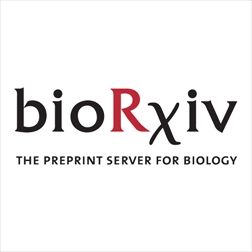We thank all the authors, collaborators, and friends, particularly @Swathi for her efforts in building this probe from scratch. We thank @krishnanyamuna.bsky.social for the inputs, @tifrhyderabad.bsky.social, @DAE India and @India Alliance for the funding and kind support.
06.04.2025 18:50 — 👍 0 🔁 0 💬 0 📌 0
Microglial labeling using MITIGATE has worked in our hands in cultured microglia, larval zebrafish and mice. MITIGATE will be useful for visualizing microglial dynamics within primary human tissues and in human cerebral organoids without eliciting an immune response.
06.04.2025 18:50 — 👍 0 🔁 0 💬 1 📌 0
We extended the MITIGATE technology for biotinylation of surface proteins on microglia using the micro-mapping technology pioneered by the McMillan group and Jim Wells's lab.
06.04.2025 18:50 — 👍 0 🔁 0 💬 1 📌 0
Further, we have used the MITIGATE platform for tracking single microglia and their interaction with neurons in co-culture using photoactivatable fluorophores tethered to the microglial surface.
06.04.2025 18:50 — 👍 0 🔁 0 💬 1 📌 0
We have deployed MITIGATE to label microglia in larval zebrafish brains and studied microglia (green)-pathogen (red) interaction in wild-type fish.
06.04.2025 18:50 — 👍 0 🔁 0 💬 1 📌 0
MITIGATE technology is spectrally tunable to any color, thus making it suitable for deep-tissue imaging. It offers excellent specificity to microglia (red); astrocytes (green) and neurons were not labeled by MITIGATE)
06.04.2025 18:50 — 👍 1 🔁 0 💬 1 📌 0
Here is a first look at microglia (red) from a mouse brain using MITIGATE.
06.04.2025 18:50 — 👍 1 🔁 0 💬 1 📌 1
We named this new microglial imaging technology MITIGATE (Microglial Imaging Through Intrinsic GPCR-Assisted Tethering of Exogenous molecules).
06.04.2025 18:50 — 👍 0 🔁 0 💬 1 📌 0
The solution: We have developed a chemical tool to visualize and manipulate microglia by covalently targeting fluorophores to the most abundant surface marker of microglia, the P2RY12 receptor, which is a GPCR.
06.04.2025 18:50 — 👍 0 🔁 0 💬 1 📌 0
Also, genetic technologies show leaky expression in other cell types in the brain (e.g., neurons and astrocytes). Non-specificity is a big issue.
06.04.2025 18:50 — 👍 0 🔁 0 💬 1 📌 0
The research problem we addressed in this study—live visualization of microglia in wild-type organisms using genetic technologies (e.g., GFP) is challenging because they become activated upon viral transduction of fluorescent marker proteins (e.g., GFP).
06.04.2025 18:50 — 👍 0 🔁 0 💬 1 📌 0

GPCR-targeted imaging and manipulation of homeostatic microglia in living systems
Microglia, the resident innate immune cells of the brain, are known to perform key roles such as synaptic pruning, apoptotic debris removal, and pathogen defense in the central nervous system. Microglial mutations are directly linked to many neurodevelopmental (e.g., schizophrenia) and neurodegenerative (e.g., Alzheimer's disease) disorders, indicating the diagnostic and therapeutic potential of microglia for treating these conditions. Currently, we lack robust molecular tools to specifically image and manipulate microglia in vivo, which presents a major hurdle in our understanding of the brain-wide functions of these cells during the early onset of brain diseases. Here, we describe a molecular technology for imaging and manipulation of homeostatic microglia in live organisms (e.g., in zebrafish and mice) by covalently targeting the purinergic receptor, P2RY12. Using this technology, we imaged microglia-pathogen interactions in the larval zebrafish brain and revealed various morphological states of microglia in the adult mouse brain. We further expanded the microglia labelling approach to single-microglia tracking and microglial surfaceome mapping using photoactivatable fluorophores and photoproximity labelling, respectively. We anticipate the use of this universal tool for studying microglial biology across species to reveal the dynamics and polarization of resting microglia into a reactive state found in many neurodegenerative diseases. ### Competing Interest Statement The authors have declared no competing interest.
Today, we report the first independent study from our lab describing a new technology for live imaging and manipulation of homeostatic microglia (brain-resident macrophages) in the brain.
www.biorxiv.org/content/10.1...
06.04.2025 18:50 — 👍 100 🔁 13 💬 2 📌 6
Computational biologist. Professor. Co-Director of Disease Mechanisms and Therapeutics Training Area
https://www.schlessingerlab.org/
@IcahnMountSinai. Opinions are mine. #DrugDesign #AI
Max-Eder Research Group Leader & Physician Scientist @NCT @DKFZ @DKTK @Uniklinik_HD
TRYTRAC @CancerCoreEurope
before PostDoc @Uchicago Gajewski lab
#skin #cancer #immunology #spatialbiology #dermatology
Scientist, Home Chef, Dog Lover, Vocalist
Chemical biologist, basketball aficianado, proud homebody. I take my science, not my posts, seriously. Personal account.
Associate Prof of ChemBio+OrgChem at UCL Chemistry, Royal Society URF, chemistry, DNA/RNA, synthetic biology. Coeliac. Dad. 🎸 boothlab.uk
Chemist at HHMI's Janelia Research Campus. Passionate about designing, building, and giving away fluorescent dyes to illuminate biological systems. Striving to be positive about all things chemistry (except ChemDraw).
ORCID: 0000-0002-0789-6343
Medicinal Chemistry & Chemical Biology research group. Stuart holds the Michael & Alice Jung Endowed Chair in Medicinal Chemistry & Drug Discovery @ UCLA (@uclacb.bsky.social).
Website: https://sites.google.com/view/conwaygroup
ORCiD: 0000-0002-5148-117X
Working at the interface of chemistry and biology at the University of Zurich. PI: Pablo Rivera-Fuentes
chemical/synthetic biologist, Luddite trying to find better ways to make molecules that do important stuff, dad, @uchicago professor of chemistry
http://www.dickinsonlab.uchicago.edu/
Professor of Chemical Biology and Molecular Therapeutics at UC Berkeley
Group Leader @ Janelia Research Campus, protein engineer, 🏳️🌈 she/they
Penn Integrates Knowledge Professor, Natural Product Aficionado, Photopharmacologist, Fox Terrierist, Book Lover, and Unfulfilled Architect. #firstgen
Assistant Professor at Leiden University. Covalent inhibitors and chemoproteomics for antibiotics. Views my own. he/him/his. https://orcid.org/0000-0001-5420-4824
Study genetic conflicts professionally. Try to avoid conflicts in personal life (with mixed results).
Fred Hutch Basic Sciences,
UW Genome Sciences,
HHMI.
Posting in a personal capacity. My posts don’t reflect my employers’ opinions.
Assistant Prof. at UZH 🇨🇭 | protein engineering for pharmacology and neuroscience | opinions my own
Research scholar at TIFR Hyderabad
I study neuro-glia-immune interactions in brain and gut with my wonderful lab in UKDRI at UCL
Y. Eva Tan Professor in Neurotechnology, MIT. Investigator, HHMI. Leader, Synthetic Neurobiology Group, http://synthneuro.org. Scientist, inventor, entrepreneur.



